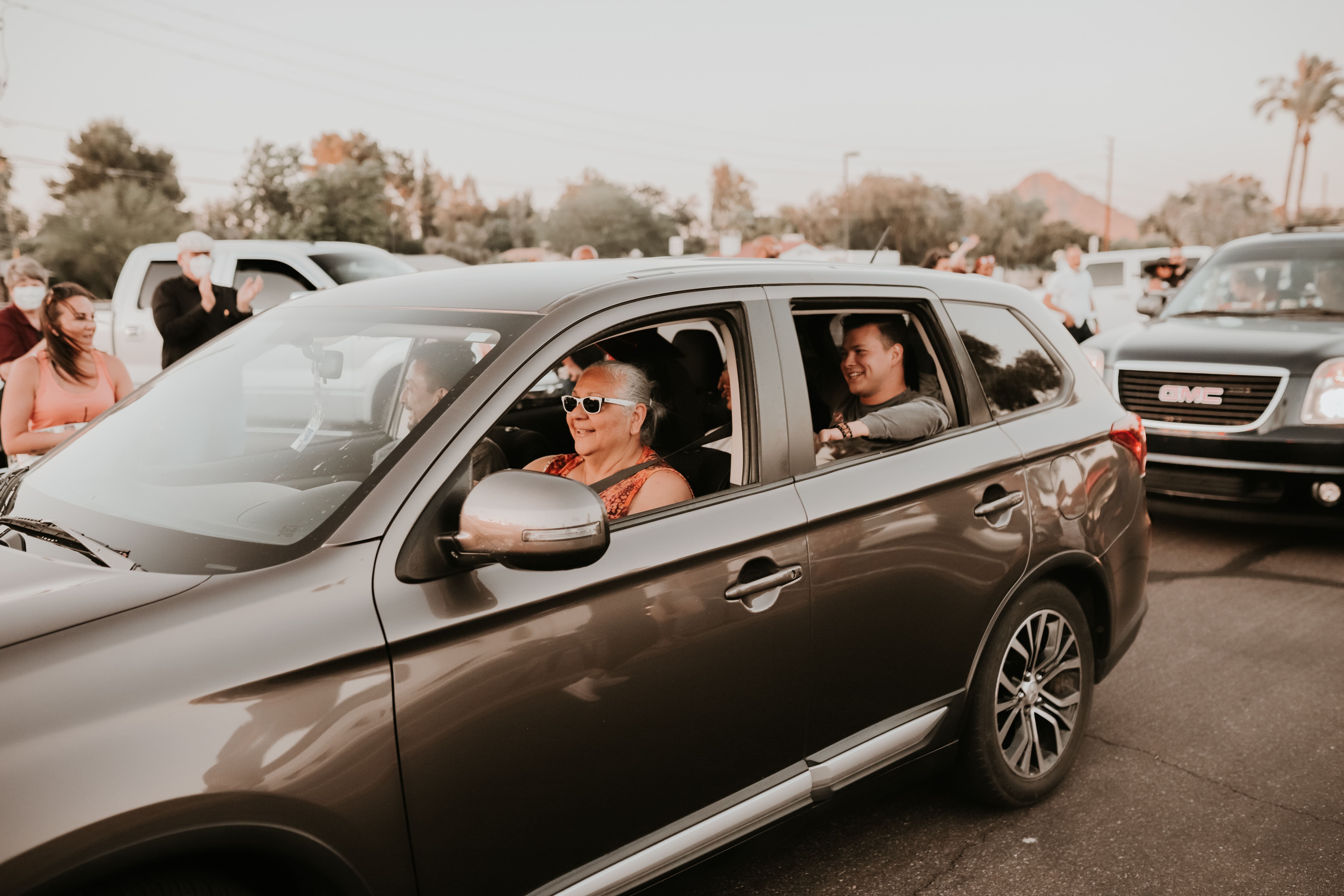easy and painless as possible.
Routine, Routine, Routine
Parents and caregivers of children with autism know full well that strict adherence to a routine is important in the daily life of the child, and travel days should be no different. Too much deviation from routine, even on the most minutiae of details, can lead to tremendous anxiety and tantrums that may only get worse for the duration of travel.
The night before your travel day and the morning before leaving for the airport, do everything you would normally do on any other normal day. This would be everything from laying out clothes, to bedtime reading, to bath routines, to the placement of toys or electronic devices, to having breakfast.
Just as importantly, do your best to follow your at-home routines even when you are away. This predictability reduces stress and anxiety and helps the child feel more in control, and will make for a much less stressful trip.
Some experts recommend turning the travel date into an event marked on the calendar, something to look forward to. Make travel something exciting and new, not something to dread, or be fearful of.
-
Have documentation of your child’s diagnosis ready, in case airport or airline staff request it.
-
Make sure you have any stuffed animal, toy, book or electronic device that might be soothing to your child should something unexpected occur.
-
If your child is sensitive to loud sounds, bring noise-canceling headphones.
-
Bring a change of clothes in case of spills.
-
Try to bring something reminds them of the comfort of home, whatever that may be.
-
Don’t forget snacks or meals either, especially if you are taking a long flight.
Make sure you ask in advance what food will be served, if any. Or, make sure you bring enough food for the entire trip or leave yourself enough time to buy some food and drinks at the airport food court or stores after passing through security.
Above all, go over everything you’ve packed in detail and make sure you have everything you may need. It is always better to pack too much than pack too little. The single most important factor in being able to travel with an autistic child without incident is to avoid surprises.
That is why every parent or guardian should begin to prepare their child weeks in advance of the travel date, going over every detail of the trip, no matter how small, and every possible scenario.Go over every minute of the trip, starting when the child gets out of bed.
-
Such as your transportation to the airport
-
Where he/she will sit
-
Buckling seatbelts
-
What to expect at the gate
-
Finding your departure gate
-
Getting to your seats
-
Getting your bags in and out of the vehicle
-
Where you will sit
-
How you will get to the gate
-
What to expect going through security
-
Boarding the place
-
What the airplane will be like during takeoff and landing.
If you will be traveling during a busy travel day and expect long lines at the airport, make sure you get to the airport extra early to possibly avoid those lines.
In fact, it is usually a good idea to rehearse the travel day in the days leading up to it.
Take a dry run, including everything from getting out of bed, getting dressed, having breakfast and traveling to the airport itself. Obviously one of the parent’s greatest fears is encountering turbulence during the flight, causing an episode in the cabin.
-
The best way to prepare is to expect a turbulent flight, and prepare accordingly.
-
Let the child know in advance that bumps are normal and nothing to fear.
-
Make sure you have items or toys that the child finds soothing at the ready.
Ideally, the flight will be smooth and completely free of turbulence, but it is always better to hope for the best and prepare for the worst.
Reading children’s books to your child about airplane travel is a great way to prepare. There are many good early learning books about travel that explain turbulence in a fun and easy way and help teach the child that it is nothing to be fearful of, that turbulence is simply a normal, routine part of air travel.
Another potential problem is that a child with autism may react negatively to the feeling of pressure in their ears and the ear-popping that occurs during takeoff and landing.
Again, prepare your child for this so it is not unexpected, and be sure to have chewing gum, or suck-on candy, depending on your child’s preferences. Drinking from a straw has been known to relieve ear pressure as well. Delayed flights are also a common aspect of air travel and another potential obstacle that you need to prepare for. Have a plan in place for unexpectedly long wait times, including security. It goes without saying, but it is also important for the parent to do their best to avoid becoming overly frustrated and upset – which can be a challenge when flights are delayed or canceled. Overall, keep your focus on the child and no other people around you throughout the trip. Many parents can be overly sensitive to what others may be thinking about them or their child in the event of an episode. However, the judgments of strangers are hardly something to be concerned about.
When you take your seat, you may politely explain to your seatmates that your child has special needs, so they will hopefully not negatively react in the event something happens. But if they still seem judgmental and unhappy, so be it. While traveling with an autistic child may be a new experience for you, for most major airlines it is something they encounter every single day. It won’t surprise you to know that the major airlines want you to be able to travel without incident almost as much as you do, and have a strong support system in place to help you do so. One great example of this is the TSA “Wings for All” program, in conjunction with The Arc – a non-profit developmental disabilities advocacy organization.
This popular program helps families traveling with autistic children become familiar with passenger procedures at the security checkpoint prior to their taking an actual flight.
In short, it is a realistic rehearsal conducted days before the actual flight.
Families arrive at the TSA security checkpoint with the typical carry-on bags and items that they would usually bring for a flight. TSA officers will guide them through the checkpoint process so that they know what to expect when they return to the airport to take a flight. Participants are also encouraged to bring a bag to “check,” so that they can pick up at the baggage claim after the event. Some airports allow families to board an actual grounded plane. Flight attendants welcome the participants aboard the plane, as they would during a normal flight. The children board, find seats and listen to safety announcements. The sounds of the plane echo throughout the cabin: the loudspeaker, the air conditioners and the whirring motors. The plane never moves. Overall, since 2011, 44 airports around the country have participated in the program, with the cooperation of various airlines. This program can go a long way towards alleviating some of the stress that people with autism and other I/DDs and their families experience when traveling by air by providing families with the opportunity to experience and learn about how their loved ones will react to different stimuli in the airport. To find your local chapter for The Arc and learn what programs they have in your area, just follow this link.
Another great resource is the TSA Cares hotline, a dedicated phone number that provides travelers with disabilities, medical conditions, and other special circumstances additional assistance during the security screening process. It is recommended that individuals call 72 hours before traveling with questions about screening policies, procedures and what to expect at the security checkpoint.
No matter what, don’t be afraid to ask for help. Let your airline know as far in advance as possible that you’ll be traveling with a child with autism. Request bulkhead seats, which feel less confining and eliminate the possibility of seat-kicking. Call your hotel days in advance and let them know that you will be arriving at a certain time with an autistic child. Ask for priority check-in and anything that might make getting settled into your room as easy and quickly as possible. Request rooms with the accommodations you need for your child, taking into account things like whether the windows get too much direct sunlight in the morning, or if the room is too close to loud noises like construction or busy intersections. Parents who may be concerned about the security screening process at the airport may ask a TSA officer or supervisor for a passenger support specialist who can provide on-the-spot assistance.
Under the Air Carrier Access Act, families have the right to request a private screening at security if need be. Parents can also request priority boarding, so their child can get through the gate and to their seats at their own pace before the crowd of passengers begins to push and jostle their way down the aisle. Above all else, pay extra close attention to detail and check and double-check every safety precaution. As parents with autistic children are well aware, wandering off is a problem for almost half of all children diagnosed with autism. In these situations, children attempt to wander or run from a safe, supervised area – many of them find themselves in a strange, dangerous place, or go missing altogether. This can happen when the child is no longer familiar with the surroundings. So when you travel, it is imperative that you not only keep an extra close eye on your child at all times but also have the child wear a medic alert bracelet with his or her name and contact information. If you do not have a medic alert bracelet, consider using a GPS tracker. This can give you the peace of mind of knowing where your child is at all times, even if they wander off. However, even if they have a GPS device, make sure they also have some form of identification on them at all times, along with medical information, just so emergency professionals can provide the right help immediately if a problem arises.
The National Child Identification Program offers kits you can use to easily create an ID packet for your child, including a fingerprint and DNA sample, along with standard information like height and weight.
This is a very helpful resource for law enforcement of emergency responders who may find your child after you get separated.
Finally, one last piece of advice: Try to have fun. After all, as frustrating as air travel may be, it is still time you get to spend with your loved one.
We have been successful because of our deep commitment to each individual and finding the exact right opportunity for them.


Awesome post! Keep up the great work! 🙂